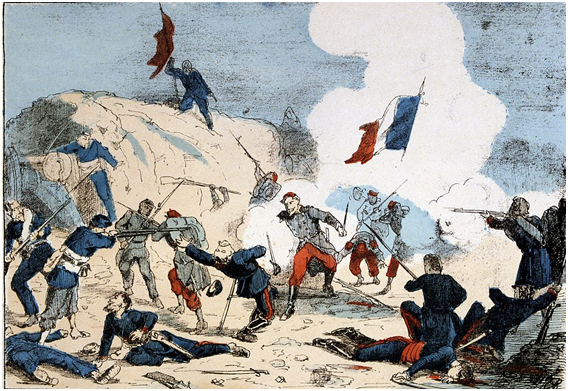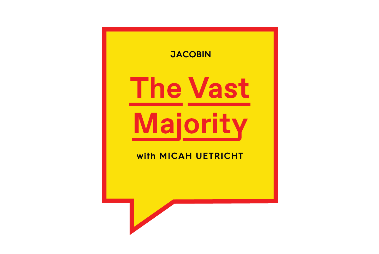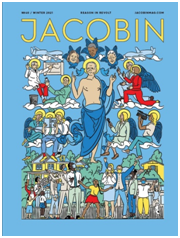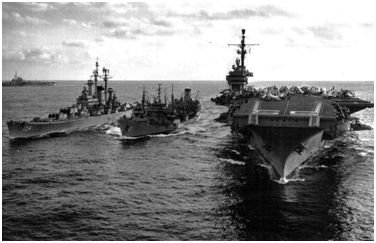Bulletin N° 962
“Julius Caesar”
by Will Durant
(Audio Book,
1:42:12)
Subject: ‘The Ides of March’ and the contemporary history of social movements.
March 20, 2021
World
Freedom Day
Grenoble, France
Dear Colleagues and Friends of CEIMSA,
We continue our presentation of James W. Douglass’ book, JFK
and the Unspeakable, Why He Died and Why It Matters (2008), with a look at the inner
workings of the “invisible government” that instigated a coup d’état in
Washington, D.C. toward the end of 1963, leaving permanent scars on the political
landscape.
The Americans inherited the Vietnam War after the French
defeat at Dien Bien Phu in
1954. Unable or unwilling to absorb the significance of this imperialist defeat, American government policy – driven by the economic interests of
the U.S. Military-Industrial Complex – resorted to false flag operations in order to bring the puppet government of South
Vietnam and the indigenous population under U.S. military control, despite the
secret negotiations by President Kennedy to reach a diplomatic settlement in
what he considered to be a hopeless military engagement.
The Ambassador.
For
a decade, Henry Cabot Lodge (and his son) had been trying unsuccessfully to
beat John Kennedy (and his brother) in an election. Lodge was no Kennedy man.
Yet he had taken the curious step in 1963 of letting it be known in Washington
that he would like to become the president’s Saigon ambassador. Why did Lodge
offer to become the ambassador of a man he so often opposed?
Henry Cabot Lodge was a major general in
the U.S. Army Reserves. He had spent q month at the Pentagon in January 1963
being briefed on Vietnam and counterinsurgency. Author Anne Blair, who was
given access to Lodge’s private papers for her book Lodge in Vietnam,
determined that it was probably during his Pentagon tour of duty that Lodge
began to float his name as a possibility for Vietnam. Blair concluded for, her
reading of Lodge’s confidential journal that he wanted to use a Vietnam
appointment as the basis for a late run for the presidency in 1964. Several of
Lodge’s close associates in South Vietnam, including his special assistant John
Michael Dunn, confirmed to Blair that Lodge ‘had accepted the South Vietnam
post to increase his chances of gaining the Republican nomination.’ Henry Cabot
Lodge wanted to represent his longtime opponent, John Kennedy, in Vietnam in
such a way that he would be able to replace him in the White House.
Robert Kennedy warned his brother that he
was making a mistake in appointing Lodge. He said Lodge would cause the
president ‘a lot of difficulty in six months.’ Even RFK was being too
optimistic about Lodge. JFK’s difficulties with his new ambassador would begin
almost as soon a Lodge arrived in Vietnam.
With a sense of having just added one more
shark to those already swimming around him, Kennedy joked to his aids Kenny
O’Donnell and Dave Powers about his own motives for the appointment: ‘The
idea of getting Lodge mixed up in such a
hopeless mess as the one in Vietnam was irresistible.’ Kennedy had in fact
taken a magnanimous risk in appointing his political adversary to an
influential post. Lodge would not return the favor by obeying the president’s
orders. Kennedy had made a mistake that would dog him that fall in Vietnam.
(p.152)
. . .
On
June 3, 1963, ignoring evidence that implicated itself, the CIA reported in
Washington “the weight of evidence indicating that government cannon-fire
caused the deaths in Hue” on May 8 that had ignited the Buddhist crisis in
South Vietnam. Ngo Dinh Diem, on the other hand,
insisted the deaths “were due to a Viet Cong terrorist grenade.” However, as we
have seen, neither the Saigon government nor the Viet Cong possessed the kind
of powerful plastic explosives that decapitated the victims at Hue on May 8. It
was only the CIA that had such an explosive, as admitted later by Captain
Scott, the U.S. military adviser responsible for the bombing. Graham Greene had
exposed earlier the CIA’s preoccupation with plastic explosives. In The
Quiet American, Greene dramatized the Agency’s use of plastic bombs in
Saigon in 1952 to scapegoat the Viet Minh as terrorists. The pattern was
repeated in Hue, with Diem the propaganda target. The CIA’s June 3 report
blamed Diem for the Hue fatalities, which had in fact polarized him and the
Buddhists, discredited his government, and derailed a possible Kennedy-Diem
alliance for a negotiated U.S. withdrawal from Vietnam. Both Kennedy and Diem
had been outmaneuvered by the CIA.(p.148)
On June 11, 1963, a Buddhist monk, Thich Quang Duc,
burned himself to death in Saigon in protest to Diem’s repressive policies.
Reporter Malcolm Brown’s wire service photo of the bonze’s self-immolation
shocked the world. When John Kennedy opened his June 12 newspaper and saw the
picture of the burning monk, he exclaimed, “Jesus Christ!” to his brother
Robert on the phone. Secretary of State Dean Rusk had already cabled the U.S.
Embassy in Saigon: “In our judgment the Buddhist situation is dangerously near
the breaking point. Accordingly, you are authorized to tell Diem that in the
United States view it is essential for the GVN [Government of Vietnam] promptly
to take dramatic action to regain confidence of Buddhists and that the GVN must
fully and unequivocally meet Buddhist demands. . . .”
“If Diem does not take prompt and
effective steps to reestablish Buddhist confidence in him we will have to
reexamine our entire relationship with his regime.”
Kennedy’s advisers were running ahead of
him. Rusk’s instructions to the Saigon Embassy led Acting Ambassador William Trueheart to convey an ultimatum to Diem on June 12 that
the president had not authorized. JFK found out by reading a CIA Intelligence
Checklist on June 14. . . .
Vietnam was spiraling out of Kennedy’s
control.(pp.148-149)
. . .
The Patsy.
CIA documents reveal that political assassinations and
Psychological Operations were among the instrument used during the Cold War to
maintain the war economy.
We
saw earlier how Lee Harvey Oswald was continually impersonated in Mexico City
in September 1963. Oswald disappeared down a black hole. His CIA-alleged visits
and phone calls to the Cuban and Soviet consulates ended up revealing more
about the CIA than they ever did about Oswald. In preparation for his patsy
role in Dallas, Oswald was being given a false identity in Mexico City as a
Communist conspirator by an unknown impersonator. CIA transcripts of fraudulent
Oswald phone calls to the Soviet Consulate ‘documented’ the future scapegoat’s
supposed communications with a Soviet assassination expert. As William Harvey
had written in his notes for the ZR/RIFLE assassination program, ‘planning
should include provisions for blaming Sovs . . .
.’[See ceimsa
bulletin n°961.] The Mexico City scenario highlighted the CIA’s plan to
blame the Soviets and the Cubans for the president’s murder.(p.153)
The Double Agent.
However, the Soviets had discovered the
plot to kill the president and knew the CIA planned to implicate them.
As we learned from the confrontation of
U.S. and Soviet tanks at the Berlin Wall, Nikita Khrushchev and his advisers
sometimes knew more about U.S. military operations than did their commander in
chief in the White House, John Kennedy. The same was true in the case of the
conspiracy to kill Kennedy, being carried out unknown to the president by his
own Central Intelligence Agency – but not unknown to Soviet agents. JFK’s
opponents in the Kremlin were not only secretly monitoring the CIA’s
preparations to kill Kennedy. They were also trying to disrupt the plot, save
the life of a president they knew they could work with, and keep from being scapegoated for his murder.
One of the most exhaustively researched
books on President Kennedy’s assassination, Dick Russell’s The Man Who Knew Too Much,
tells the story of a U.S. counterintelligence agent hired by the Soviets to
kill Lee Harvey Oswald and thereby prevent JFK’s assassination. The double
agent’s reluctance to become either Oswald’s assassin for the KGB, or part of
JFK’s assassination for the CIA, moved him to a desperate act.
Richard Case Nagell,
‘the man who knew too much,’ walked into a bank in El Paso, Texas, on September
20, 1063, and calmly fired two shots form a Colt .45 pistol into a plaster wall
just below the bank’s ceiling. He then went outside and waited in his car until
a police officer came to arrest him. When questioned by the FBI, Nagell made only one statement; ‘I would rather be arrested
than commit murder and treason.’(pp.152-153)
In the late fifties while stationed in
Japan, Nagell began his Army/CIA role as a double
agent in liaison with Soviet intelligence. In Tokyo, Nagell’s
path converged with that of counterintelligence agent Lee Harvey Oswald. Both
men worked in a counterintelligence operation with the code name ‘Hidell,’ which Oswald later used as part of his alias, ‘Alek James Hidell.’ Nagemm’s biographer Dick Russell believes it was Nagell who actually assigned the ‘Hidell’
alias to Oswald.
As a continuing double agent in 1963, Nagell was working with Soviet intelligence in Mexico City.
He was reporting back to the CIA, in an operation directed by the chief of the
CIA’s Cuban Task Force, Desmond Fitzgerald. Assigned by the KGB to monitor Lee
Harvey Oswald in the United States after Oswald returned from Russia, Nagell became involved in New Orleans and Texas with Oswald
and two Cuban exiles in what he saw was a ‘large’ operation to kill JFK. The
Cubans were known by their ‘war names’ of ‘Angel’ and ‘Leopoldo.’
Nagell told Dick Russell that Angel and Leopoldo ‘were connected with a violence-prone faction of a
CIA-financed group operating in Mexico City and elsewhere.’ He identified
Angel’s and Leopoldo’s CIA-financed group as Alpha
66.
Alpha 66 was the group of Cuban exile
paramilitaries we have already encountered who were directed by David Atlee
Phillips, Chief of Covert Action at the CIA’s Mexico City Station. In early
1963, Phillips deployed Alpha 66 in attacks on Russian ships in Cuban ports.
The purpose of the provocative raids was to draw JFK into a war with Cuba.
Kennedy responded by ordering a government crackdown on the CIA-sponsored
raids, further antagonizing both the CIA and the exile community. Alpha 66 had
ignited not a U.S. war with Cuba, but a more lethal hatred of the President.
This was the CIA-funded group Richard Case Nagell
said Angel and Leopoldo belonged to, while they were
meeting with Oswald.
In September 1963, Nagell
was ordered by the KGB to convince Oswald that he was being set up by Angel and
Leopoldo as the assassination patsy – or if that
failed, to murder Oswald in Mexico City and then take up residence abroad. The
Soviets wanted to save Kennedy by eliminating the scenario’s patsy and to keep
from being scapegoats themselves. As Nagell told Dick
Russell,‘If anybody wanted
to stop the assassination, it would be the KGB. But they didn’t do enough.’(pp.153-154)
The “sheep-dipping” of Lee Harvey Oswald by the CIA to
eliminate his former identities and prepare him for a new use continued up to
November 22, when his identity had been successfully re-converted from an
anti-Communist militant to a plausible pro-Communist activist, ready to
assassinate a president who was intent on betraying the United States America
in the Cold War.(p.156)
The Architect.
How had the CIA managed to place
undercover agents in every branch of the American government in Saigon by the
fall of 1963?
The answer open a door to understanding the
murder of John F. Kennedy, because the
process whereby the CIA took over Vietnam was part of a broader problem JFK
faced in Washington. While the president struggled to push his newly found
politics of peace past the anti-communist priorities of the CIA, that creature from
the depths of the Cold War kept sprouting new arms to stop him. As in Vietnam,
the CIA has agents operating in other branches of the government. Those extended
arms of the agency acted to forward its policies and frustrate Kennedy’s, as in
the case of AID’s suspension of the Commodity Import Program, thereby setting
up a coup. J. Edgar Hoover knew the CIA had infiltrated the FBI’s decision
making as well, making it possible for the CIA to cancel the FBI’s FLASH on Oswald
at a critical moment in October, setting up the assassination of Kennedy. How
had the CIA’s covert arms been grafted onto these other parts of the government?
One man in a position to watch the arms of
the CIA proliferation was Colonel Fletcher Prouty. He
ran the office that did the proliferating. In 1955, Air Force Headquarters
ordered Colonel L. Fletcher Prouty, a career Army and
Air Force officer since World War II, to set up a Pentagon office to provide military
support for the clandestine operations of the CIA. Thus Prouty
became director of the Pentagon’s ‘Focal Point Office for the CIA.’
CIA Director Allen Dulles was its actual
creator. In the fifties, Dulles needed military support for his covert
campaigns to undermine opposing nations in the Cold War. Moreover, Dulles
wanted subterranean secrecy and autonomy for his projects, even from the
members of his own government. Prouty’s job was to
provide Pentagon support and deep cover for the CIA beneath the different branches
of Washington’s bureaucracy. Dulles dictated the method Prouty
was to follow.
‘I want a focal point,’ Dulles said. ‘I want
an office that’s cleared to do what we have to have done; an office that knows
us very, very well and then an office that has access to a system in the
Pentagon. But the system will not be aware of what initiated the request – they’ll
think it came from the Secretary of Defense. They won’t realize it came from
the Director of Central Intelligence.’
Dulles got Prouty
to create a network of subordinate focal point offices in the armed services,
then throughout the entire U.S. government. That person took orders directly
from the CIA but functioned under the cover of his particular office and branch
of government. Such ‘breeding,’ Prouty said decades
later in an interview, resulted in a web of covert CIA representatives ‘in the
State Department, in the FAA, in the Customs Service, in the Treasury, in the
FBI and all around through the government – up in the White House . . . . Then
we began to assign people there who, those agencies thought, were from the
Defense Department. But they actually were people that we put there from the
CIA.’
The consequence in the early 1960s, when
Kennedy became president, was that the CIA had placed a secret tam of its own employees
through the entire U.S. government. It was accountable to no one except the
CIA, headed by Allen Dulles. After Dulles was fired by Kennedy, the CIA’s
Deputy Director of Plans Richard Helms became this invisible government’s
immediate commander. No one except a tight inner circle of the CUIIA even knew
of the existence of this top-secret intelligence network, much less the identity
of its deep-cover bureaucrats. These CIA ‘focal points,’ as Dulles called them,
constituted a powerful, unseen government within the government. Its
Dulles-appointed members would act quickly, with total obedience, when called
on by the CIA to assist its covert operations.
As the son of an ambassador to Britain and
from his many years in the House and Senate, John Kennedy had come to understand
the kind of power he would face as a changing president, trying to march to the
beat of a different drummer. However, in his struggles with the CIA, Kennedy
had no one to tell him just how extensive the agency’s Cold War power had
become beneath the surface of the U.S. government, including almost certainly
members of his own White House staff. In his final months, JFK knew he was
being blocked by an enemy within. However, he was surrounded by more
representatives of that enemy than he could have known.(pp.196-197)
Sincerely,
Francis Feeley
___
Professeur honoraire de l'Université
Grenoble-Alpes
Ancien Directeur de
Researches
Université de Paris-Nanterre
Director of The Center for the Advanced Study
of American Institutions and Social Movements
(CEIMSA-in-Exile)
The University of California-San Diego
http://www.ceimsa.org
a.
“Unless we unite to resist”
World Freedom Day, March 20
by Mark Crispin Miller
+
New World Next Week with James Evan Pilato
https://www.corbettreport.com/interview-1625-new-world-next-week-with-james-evan-pilato/
(28:34)
+
Can the arts survive the pandemic?
with Rick Sanchez
(7:56)
RT America's
Faran Fronczak reports on
the reopening of "ARTECHOUSE," an interactive high-tech museum in
Washington, DC and the impact of the COVID-19 pandemic on museums and galleries
across the US. Then Rebecca Medrano, co-founder and executive director of GALA
Hispanic Theater, joins Rick Sanchez to discuss the devastating blow the
pandemic has dealt to the world of live theater, the current plight of working
actors, whose livelihoods remain in peril, and the existential threat that the
pandemic represents to the institution of live theater.
+
The Politics of Cultural Despair
https://www.youtube.com/watch?v=GxSN4ip_F6M
with Chris Hedges
(1:58:22)
+
“The Emperor’s New Clothes”
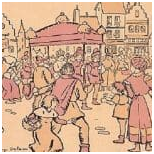
https://storiestogrowby.org/story/the-emperors-new-clothes-audio-story-for-kids/
(audio, 5:20)
&
“Les Indes Galantes”
https://www.youtube.com/watch?v=9h9HP-VOJv4
(5:46)
Clément Cogitore adapte une courte partie de ballet des "Indes
galantes" de Jean-Philippe Rameau, avec le concours d’un groupe de
danseurs de Krump, et de trois chorégraphes : Bintou Dembele, Grichka et Brahim Rachiki. Le Krump est une danse née dans les ghettos de Los Angeles
dans les années 90. Sa naissance résulte des émeutes et de la répression
policière brutale qui ont suivi le passage à tabac de Rodney King.
===========
b.
AZN is a very big investor in Moderna
https://markcrispinmiller.com/2021/03/azn-is-a-very-big-investor-in-moderna/
by Mark Crispin Miller
+
AstraZeneca Just Sold Its Moderna Stock:
Should You?
https://www.fool.com/investing/2021/03/03/astrazeneca-just-sold-its-moderna-stock-should-you/
by Keith Speights
===========
c.
“We Did Not Suffer Equally”
https://www.nytimes.com/interactive/2021/03/11/opinion/covid-inequality-race-gender.html
by Yaryna Serkez
+
17 experts worried about the likely danger of “disease enhancement”
from rushed-out COViD-19 vaccines met to talk about it all A YEAR AGO
by Mark Crispin Miller
+
Consensus summary report for CEPI/BC
March 12–13, 2020 meeting: Assessment of risk of disease enhancement with COVID-19
vaccines
https://www.ncbi.nlm.nih.gov/pmc/articles/PMC7247514/
by NCBI (National Center for Biotechnology Information,
U.S. National Library of Medicine)
===========
d.
Stop Asian Hate: Connie Wun on Atlanta Spa
Killings, Gender Violence & Spike in Anti-Asian Attacks
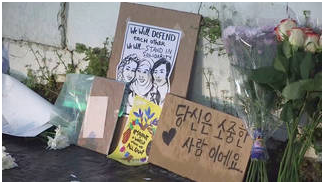
https://www.democracynow.org/2021/3/18/atlanta_shooting_rampage_anti_asian_violence
with Amy Goodman
(31:33)
+
DEBATE: “Israel-Palestine”

with Noam Chomsky & Rudy Rochman
(1:27:11)
+
Sacco et Vanzetti
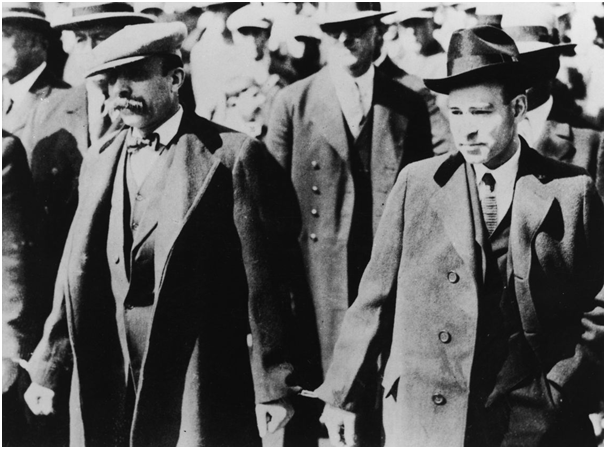
https://www.franceinter.fr/emissions/affaires-sensibles/affaires-sensibles-09-octobre-2020
(Audio, 53 mins )
===========
e.
The
Anti-Semitic Birth of the Zionist State: A History of Israel’s Self-Hating
Founders
https://www.mintpressnews.com/anti-semitic-birth-of-zionism-history-israel-self-hating-jews/276238/
by Miko Peled
When the
victims of Zionism finally have their day in court, the world will see just how
cruel and racist the early Zionists really were.
===========
f.
China, Iran unite over oil deal while US worries
with Rick Sanchez
(25:24)
+
“Why India should stop being protectionist & talk to adversaries
like China”
with Kishore Mahbubani
(40:11)
+
China in Africa: An African Perspective
with Gyude Moore
(58:36)
+
China flips switch on fusion & weather-control tech
with Rick Sanchez and George Galloway
(25:28)
+
“Foreign Policy, China Conflict & Covid
Crisis”
with S. Jaishankar
(46:22)
+
Team Biden slapped around by China
with Alex Mihailovich
(25:52)
+
How China bought the US globalist elite
https://markcrispinmiller.com/2021/03/how-china-bought-the-us-globalist-elite/
by Mark Crispn Miller
+
“The Thirty Tyrants”
https://www.tabletmag.com/sections/news/articles/the-thirty-tyrants
by Lee Smith
The deal
that the American elite chose to make with China has a precedent in the history
of Athens and Sparta
+
Anti-Communism: America's Unofficial Religion
with Abby Martin
(28:59)
+
How China won the Middle East without firing a single bullet
https://www.mintpressnews.com/how-china-won-the-middle-east-without-firing-a-single-bullet/276269/
by Ramzy Baroud
“If oil and influence were the prizes, then it seems
China, not America, has ultimately won the Iraq war and its aftermath – without
ever firing a shot.” — Jamil Anderlini
===========
g.
People to People: Horizontal Social Change
with Richard Wolff
(29:55)
“Corporate Threats to Leave are Empty”
with Richard Wolff
(9:32)
From: Rep. Andy Levin
[mailto:info@boldprogressives.org]
Sent: Friday, March 19, 2021 1:46 PM
To: Francis Feeley
Subject: Sign my letter to Amazon CEO Jeff Bezos
Amazon
workers in Alabama are trying to unionize, but Amazon is trying to break the
back of their organizing efforts with misleading text messages and anti-union
propaganda.
Amazon
has even tried to force workers to vote in-person in the middle of a pandemic
hotspot.
Grassroots
pressure now can make a difference.
Amazon’s
profits have soared by 70 percent over the last year thanks in significant part
to the hard work of their employees.
Amazon
workers have put in long hours and risked their own health during the COVID-19
pandemic to meet increased demand, and they deserve to share in the success
they have made possible -- including compensation, benefits, and
respect that reflects their true value to the company.
Unfortunately,
Amazon has an established history of disempowering workers -- including
spying on employees seeking to organize a union.
PCCC members
have a long history of fighting for workers -- one reason I value the PCCC's
support.
Thanks for being
a bold progressive.
Andy Levin,
Congressman, MI-09
===========
h.
From: Jacobin
[mailto:news@jacobinmag.com]
Sent: Thursday, March 18, 2021 3:55 PM
To: Friend
Subject: The Paris Commune is still a beacon for radical change.
|
===========
i.
Empire Files Archives
https://youtube.com/c/EmpireFiles
with Abby Martin
+
Investigative journalism on empire
archives
+
Inside Saudi Arabia: “Butchery,
Slavery & History of Revolt”
or
https://www.filmsforaction.org/watch/inside-the-saudi-kingdom-butchery-slavery-and-history-of-revolt/
with Abby Martin
+
Why a Shadowy Tech Firm With Ties to Israeli Intelligence Is Running Doomsday Election Simulations
https://unlimitedhangout.com/2020/07/investigative-series/why-a-shadowy-tech-firm-with-ties-to-israeli-intelligence-is-running-doomsday-election-simulations/
by Whitney Webb
===========
j.
Immoral &
Illegal: U.S. & U.K. Move to Expand Nuclear Arsenals, Defying Global
Disarmament Treaties
https://www.democracynow.org/2021/3/18/nuclear_weapons_proliferation
with Alicia Sanders-Zakre
(9:58)
+
|
k.
From: Jim O'Brien via H-PAD
Sent: Thursday, March 18, 2021
Subject: [H-PAD] H-PAD Notes 3/18/21: Syllabus on sanctions; links to recent
articles of interest
Note: Historians for Peace and Democracy has published Empire of Sanctions, a 14-part syllabus on the nature and history of economic
sanctions, focusing especially on their use by the US since the early 20th
century. All the assigned readings are available on the Web. The historians who
compiled it are Renate Bridenthal, CUNY (emerita); Molly Nolan, NYU; and Prasannan
Parthasarathi, Boston University.
Links to Recent Articles of Interest
"Why Can't Britain Handle the Truth about Winston
Churchill"
By Priyamvada Gopal,
The Guardian, posted March 17
On pressure in Britain to prevent public attention to Churchill's
"murkier side": his views on race and empire. The author teaches
Postcolonial Studies at Cambridge University and wrote Insurgent Empire: Anticolonial Resistance and
British Dissent (Verso, 2020).
"The Victims of Agent Orange the U.S. Has Never
Acknowledged"
By George
Black, with photographs by Christopher Anderson, New York Times
Magazine, posted March 16
A richly
illustrated article on the multigenerational health problems caused by the
secret use of deadly Agent Orange in Laos during the Vietnam War, focusing
especially on the work volunteers with the War Legacies Project who have
brought the tragic stories to light.
"Ten Problems with Biden's Foreign Policy - and
One Solution"
By Medea Benjamin and Nicolas J. S. Davies, Nation of Change, posted March 12
"The
Biden presidency is still in its early days, but it’s not too early to point to
areas in the foreign policy realm where we, as progressives, have been
disappointed–or even infuriated." Medea Benjamin
is a co-founder of CODEPINK for Peace and Nicolas Davies is a researcher for
CODEPINK and author of Blood on Our Hands: The American
Invasion and Destruction of Iraq (Nimble Books, 2010).
"On Shedding an Obsolete Past"
By Andrew Bacevich, TomDispatch.com, posted March 11
Warns against
the influence of the traditional foreign policy establishment - "the
Blob" - in the Biden administration.The author
is a professor emeritus of history and international relations at Boston
University and president of the Quincy Institute for Responsible Statecraft.
"Black Votes Have Always Mattered"
By Van
Gosse, History News Network, posted March 7
On African American voting in the US between the Revolution and the Civil
War. The author teaches history at Franklin and Marshall
College and has written The First Reconstruction: Black
Politics in America Between the Revolution and the
Civil War (U. of North Carolina Press, 2021). He is co-chair of H-PAD.
By Kevin
Young, Sidecar [New Left Review blog], posted March 5
On US
policies toward Latin America early in the Biden administration, finding more
continuity than change. The author teaches Latin American history at the
University of Massachusetts Amherst. He is on the H-PAD Steering Committee.
"Racist Zoombombings the Latest Application of
Technology by White Supremacists"
By Roy E. Finkenbine, History News Network, posted February 28
On the disruption of numerous Black History Month on-line events with
racist and obscene imagery. The author teaches history at the
University of Detroit Mercy.
"QAnon and the Satanic Panics of Yesteryear: What
They Can Teach Us about What to Expect"
By Daniel N. Gullotta, The Bulwark, posted
February 25
"It is worth remembering that even the more wild and unhinged
accusations of Satan-worshipping have a long history in this country—and by
studying the precedents, we might be able to better understand the dynamics and
future of QAnon." The author is a PhD candidate
in religious history at Stanford University.
"Don't Defend Democracy with Half-Truths about the
Past"
By Brook Thomas,
History News Network, posted February 21
Warns against romanticizing either the nation's founders or President
Grant, whose limited support for racial justice during Reconstruction is often
exaggerated. The author is a professor emeritus at UC Irvine and
author of The Literature Of
Reconstruction: Not In Plain Black And White (Johns Hopkins U. Press, 2017).
'What
'America Is Back' Really Means"
https://spectator.us/topic/america-back-biden-munich-security-conference
By Andrew Bacevich, Spectator US, posted February 21
"The idea that a US-led bloc of Western nations will determine the
future of the planet will become increasingly implausible." The author is
a professor emeritus of history and international relations at Boston
University and president of the Quincy Institute for Responsible Statecraft.
Thanks to Jerise Fogel, Rusti Eisenberg, and an anonymous reader for
flagging some of the articles included in the above list. Suggestions can be
sent to jimobrien48@gmail.com.
===========
l.
From: National Security
Archive [mailto:nsarchiv@gwu.edu]
Sent: Thursday, March 18, 2021
Subject: The Allende Massacre in Mexico: A Decade of
Impunity
|
===========
m.
America's Longest War
with Chris Hedges
and Erik Edstrom
(27:04)
===========
n.
Progressives Introduce Med4all Bill
After All Leverage Is Gone
with Jimmy Dore
+
Teachers Union President Caught
Screwing Teachers & Public Education
with Jimmy Dore
(6:32)
+
Profiteering Electric Companies
https://youtu.be/y9MbNk9jTtA
with Richard
Wolff
(9:45)
===========
o.
The Corbett Report
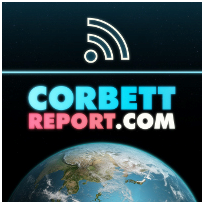
Interview 1626 – James Corbett on China, 3D Chess, Ethics and Elvish |
|
- Interview 1626 – James Corbett on China, 3D Chess, Ethics and Elvish
- Freedom Rally, Modern Kids, Spotify Censors – New World Next Week
- Interview 1625 – New World Next Week with James Evan Pilato
Interview 1626 – James Corbett on China, 3D Chess, Ethics and Elvish |
Freedom Rally, Modern Kids, Spotify Censors – New World Next Week |
Interview 1625 – New World Next Week with James Evan Pilato |
From: ZCommunications [mailto:michael.albert@zmag.org]
Sent: Thursday, March 18, 2021
Subject: Join Chomsky, Albert and eleven more...
|

